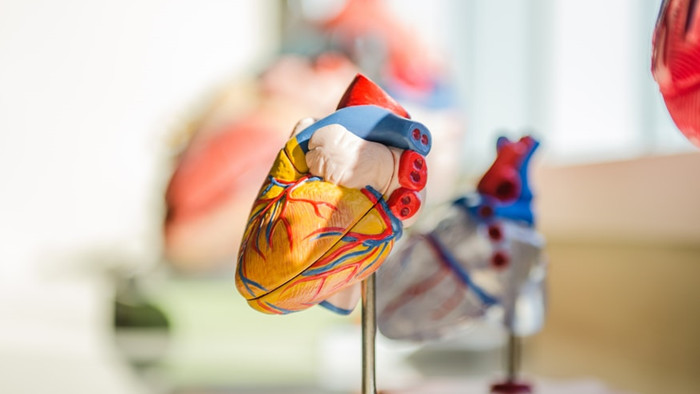The Real Look Of The Heart Stent
The Real Look Of The Heart Stent – Ultrasonic Stent Coating Systems – Cheersonic
Cardiac stent (Stent), also known as coronary stent, is a commonly used medical device in cardiac interventional surgery, which has the function of dredging arterial blood vessels. Cardiac stents first appeared in the 1980s, and have gone through the development of metal stents, coated stents, and dissolvable stents. The main materials are stainless steel, nickel-titanium alloy or cobalt-chromium alloy. Look, this is what the bracket really looks like!
1. Disinfection and local anesthesia
Most of the coronary stent implantation route is the right radial artery. Before the operation, the arm needs to be fully disinfected, and then the towel is spread to ensure that the operating table is in a sterile state; an anesthetic is administered for local anesthesia.

2. Puncture
Find the puncture location, first use a dermatome to make a small incision, and then use a puncture needle to puncture. After seeing back, the puncture was successful, and the puncture guide wire was sent.
3. Create a channel
Pull out the puncture needle, insert the sheath (including the inner sheath and outer sheath) along the puncture guide wire; then pull out the puncture guide wire and inner sheath, leave the outer sheath in the blood vessel, and establish a channel for the subsequent entry of the guide wire and catheter .
4. Start imaging
The angiography guide wire and angiography catheter are sent into the blood vessel through the outer sheath. The guide wire here is not an ordinary metal wire, but a guide wire that can be flexibly bent and steered by a doctor, traversing the complex vascular path, from the radial artery retrograde to large blood vessels. The catheter can meander through the blood vessel along the path of the guide wire until the coronary ostium; after the angiography catheter reaches the coronary ostium, connect the angiography catheter to the triple tee, and the triple tee is respectively connected to the pressure sensor, heparin saline (used for Anticoagulation) and contrast agent (for contrast); use the ring handle syringe to push the contrast agent, and the shape of the urinary blood vessels can be displayed on the computer screen through X-ray fluoroscopy; in the process of arriving at the destination, the doctor needs to pass X-ray fluoroscopy is used to grasp the situation, and the contrast agent is pushed through the catheter. This special liquid can clearly show the thickness and flow of blood vessels under X-ray, so as to find the occluded lesion, which is often referred to as the “criminal of blood vessel blockage”. Blood vessel”.
5. Balloon expansion
After the angiography is completed and the culprit blood vessel is identified, the angiographic guide wire and angiographic catheter are pulled out, and the guide catheter and guide wire are fed. The main difference between the guide catheter and the angiography catheter is that the cavity is large, which is convenient for the entry of the ball and the frame; after the balloon reaches the predetermined position, a pump is used to pressurize the balloon.
6. Implanted stent
The guide wire is sent into the delivery system (balloon + stent), after the balloon is pre-expanded, the plaque in the blood vessel is squeezed against the inner wall of the blood vessel, and the balloon with the stent can pass through smoothly. After the delivery system reaches the predetermined position, the force pump is used to open the stent; the stent opened by the balloon is in the shape of a mesh.
7. Incision dressing
Clean the blood around the dry arm; pull out the sheath and apply pressure with gauze; place a hemostatic compressor; immobilization is complete.
The above is the main process of coronary stent implantation. At present, all hospitals above the municipal level in China can successfully carry out stent implantation, and some county-level hospitals are gradually carrying out stent implantation, which makes a large number of myocardial infarction patients gain operation time.
The ultrasonic drug-eluting stent spray coating system can be applied to the preparation of polymer coating for preventing vascular restenosis on the surface of implantable drug-eluting stent. Compared to conventional two-fluid nozzles, ultrasonic nozzles can spray a more uniform drug coating that completely covers the stent without the orange peel and adhesion to a complex stent. The soft atomized spray adheres well to surfaces and coating morphology characteristics can be adjusted by modifying process parameters. In addition, the stent coating obtained by ultrasonic spray coating technology is thinner than dip-coating. Ultrasonic spray coating technology can precisely control the amount of drug sprayed on the stent, making the control of the spraying more precisely.
The special nozzle for ultrasonic stent with national patent can realize accurate application of medicine, and the fixture specially equipped for stent is convenient for loading and unloading. This device has the characteristics of supporting multiple series and multiple types of stents, high drug utilization, accurate drug delivery, and high uniformity of the stent membrane layer.

